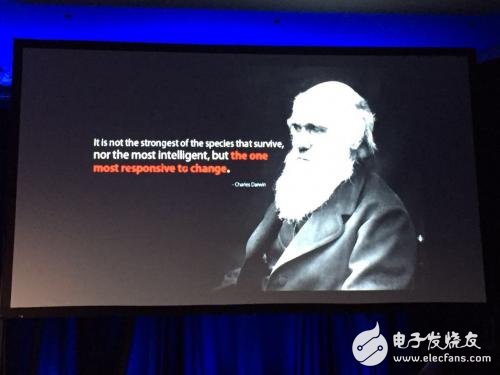Last week, Baidu held its first overseas The Big Talk in Silicon Valley, USA. At the meeting, many leading experts in deep computing and artificial intelligence in Silicon Valley shared the world's leading research results and ideas, including Cornell University. Hod Lipson, head of the Creative Machines Lab, shared the latest in his lab's next-generation robot with a self-aware and adaptive environment. Cultivate robots with big data and complete robot self-perception with deep learning Lipson discusses with you a robotic technology that has already started, called robot self-consciousness. "This is not a technology you will see tomorrow. I bet this is the technology you will see in your lifetime." Lipson defines self-awareness as a self-imagining ability. He made an analogy. Can you imagine yourself going to the beach tomorrow? Can you imagine the taste of the ocean? Can you perceive the sand now? Can you imagine what you look like in my eyes? “Why can you imagine that you have not really experienced the situation, that is, because of self-perception, you are conscious. To a certain extent, you are not making decisions based on the experience you have actually experienced. This is me. The definition of self-perception, which we humans have - and we hope that the machine will eventually have the ability." “Darwin said that not the strongest species or the most intelligent species can survive, but the species that are most responsive to the environment and change will eventually survive. So adaptation is very important. More than a decade ago, We started to decide not to design and build robots anymore, we have to breed robots." Lipson's robots actually contain two levels, one is to simulate a robot (simulator) with a supercomputer, and the other is to manufacture a robot through a 3D printer. So what is called cultivating robots, Lipson explained: "We will 'reward' them according to the performance of the robots. If they do well, copy them and make small changes in some places so that they are in specific tasks. - For example, crawling on the floor will be better and better, so they will be copied more. In this way, we will continue to evolve and eventually get a conscious robot." “We used the 3-D printer to make these robots and let them move from the virtual environment to the real world. These robots were continually nurtured by deep learning techniques, not directly designed by people. Exciting. Although it is still only plastic, we will print it in titanium in the future. At this stage, I started to design more complex robots. One of the incredible robots, it has a pneumatic engine, it can jump up and can be flipped on the ground, I am demonstrating to my colleagues that this technique of cultivating robots can be successful. So we made this robot. We put it in a big cage, they are constantly turning forward and backward in this cage, you can see that these actions are random self-completion, that is, it is learning how to walk. “We collect data from the robot, collect sensor data through sensors, capture motion data, and data that the robot feels. We collect all of this data and use it to nurture the simulator. So, not just to give the simulator data, We now "feed" data to both robots and simulators. As a result, robots are getting better and better, and our robots have the ability to self-impersonate and adapt. "The robot has begun to learn self-imitation in its environment and make intuitive judgments based on it. When things are not intuitively judged by it, it will add its own self-imagination. Let me show you this kind of robot. These robots will learn to walk. They first create a lot of assumptions, through which the engine moves randomly and perceives, feeling the left and right swings. They collect all of this data and generate their assumptions/judgments. In order to test their adaptive ability, we did a very cruel thing, we cut off one of its legs. You can see that it is adaptive through self-imagination, and it has lost a leg in its self-imagination. You can see that this pink leg is shorter than the others. With such new self-imagining, it has found new ways to move forward. "You know, if I want to design a robot with one leg missing, I can make a better-running robot. But what we are doing here is not to tell the robot that it has one leg missing, but let it self Perceived and dynamically changed. The robot's self-imagination changed, and the way the robot behaves changed. In other words, it adapts." Dc Bench Power Supply,Variable Dc Power Supply,Adjustable Dc Power Supply,Regulated Dc Power Supply Yangzhou IdealTek Electronics Co., Ltd. , https://www.idealtekpower.com
